We left the Ushuaia airport to board the buses that were waiting for us and started off through the town. Ushuaia is a very beautiful and different-looking place. The buildings are worn but brightly coloured with lots of plants in the nearly none-existent yards. The buildings are compacted together right along the edge of the street, so there is not much space wasted. The streets are very narrow with many going uphill at fairly steep grades, and the traffic is pretty crazy. There, you can’t trust any of the cars. The drivers are nuts! Though we were in a city with thick traffic and single lanes going each way, cars going in the same direction as us were still squeezing past in an effort to reach their destination seconds before us. You may think “this sounds just like where I live!”, but trust me, the nuts driving there are nuts in a completely different way than the nuts we know here in Canada at least. It was a bit freaky; I’m glad I wasn’t the one driving! Eventually we got into an area towards the edge of town where the houses are more spaced and private. The yards here are bigger with more shrubbery and trees, and it’s all along the shoreline. Everything looks clean and well-tended. We pulled up to this big bright yellow palace-type building that had the most amazing view of the Beagle Channel in front, beech forest on two sides, and a large lawn with many flower beds on the other side and front. It was beautiful. We were informed that this was the hotel (Las Yamanas) that had been reserved for Students on Ice for the next few days.
We went inside to a gorgeous lobby that had a tiny water pond right in the center of the room. After checking in and dropping off our bags we went upstairs to the dining room for a late lunch before heading outside. Las Yamanas was very cozy and warm inside. It felt spacious, open, and pristine, but the brick walls, water pond, and décor gave it a nice relaxed feeling. We had some time to explore outside before our first SoI meeting. Outside it was cool and fresh – I could smell the strong briny scent of decaying salt water plants on the beach and the cleansing scent of rain coming over the hills; I could hear the gentle breeze coming down the channel, the lapping of waves on the rocky shore, and the ocean/summer-sounding screams of my lifer Kelp Gulls. It must have been around +6 or 8C, with a cool wind. Nearby, a little brown thrush-type bird I later learned was a Gray-flanked Cinclodes flitted in and out from under the patio where I assumed it had a nest. Looked across the Beagle Channel, I could see Chili and the majestic Andes Mountains. It certainly felt like a special place. Once again I was reminded of exactly how far from home I was. The strange thing was though the landscape was undoubtedly foreign, it was also strikingly similar to home. It reminded me of a mixture of Haines, Alaska and various aspects of the Yukon.
All of the students were called to their first SoI meeting as a complete team (all 72 of us, plus the leaders) in a building nestled in the Beech forest behind the hotel. There were stone paths leading through the gardens and various wooden and stone structures on the way to the meeting-house.
At the meeting we were introduced to all of the leaders, who went up and told us a bit about themselves. I was excited to finally spot the expedition Ornithologist, Santiago Imberti, who was one of the last people to arrive in Ushuaia. He was one of the people I was most excited to meet, and couldn’t wait to go and introduce myself. There were 17 leaders in all: Geoff Green, the expedition leader and founder/president of SoI; Clare Glassco and Shirley Manh, the two SoI Managers and program coordinators; Bianca Perren, a geologist, artist, and polar-enthusiast; Mike Beedle, the photographer and videographer; Claudia Kraft, the doctor; Richard Ferguson, the American People to People chaperone; Justin Dearing, the youth engagement and change catalyst leader; Santiago Imberti, an Ornithologist and naturalist; Claudia Adams, a geology professor at Carleton University; Joe Needoba, an oceanography assistant professor at Oregon Health and Science University; Hans Gelter, a professor/senior lecturer at the Lulea University of Technology in Sweden; Alex Taylor, a polar guide and educator; David Fletcher, a base commander and polar historian; Pat Maher, a professor at Cape Breton University; Olle Carlsson, a polar naturalist and historian; and Terry (Scoby) Pye, a polar scientist and explorer. An incredible array of people from around the world, teamed up to lead us on the expedition of our life. We were so fortunate and lucky to have these amazing people with us to share their wealth of knowledge.
After our meeting was over, Justin Dearing announced that the students were to meet him in the front yard to participate in a sharing circle. On the way, I went over and introduced myself to Santiago. I think he realized I was a birder right away when he spotted the binoculars hanging from around my neck. He was able to quickly look over a few of the unidentified bird photos on my camera and tell me what they were before the meeting; what a relief it was to have another birder there! I think we were both happy to have another serious birder to hang out with on the expedition. He gave me a checklist and mini guide to the birds of Argentina and Antarctica for the trip, which were very useful.
The sharing circle was a lot of fun – Justin showed us how to do ‘The Justin Pose’, which consists of facing breath-taking landscape, closing your eyes, spreading your arms, and leaning back to take a deep breath of air. Leaning back as though your heart were trying to beat its way out of your chest, and just absorb the beauty of the world with all your heart and soul. After that we all formed a circle and began student introductions. We were required to tell our names, where we were from, a quirky fact about ourselves, and something heart-felt. Some of the things we learned about each other were pretty funny, and others were very touching. Even though we each had a time limit of 30 seconds, it still took quite a while to get through 72 students and we were happy to go in for dinner and to warm up afterwards.
After dinner Santiago invited me to go birding along the shoreline before our last evening meeting. It was a lot of fun, and really cool to get to know him! He pointed out several Magellanic Oystercatchers on the beach, more Southern Lapwings, some Crested Ducks, Upland Geese, and Ashy-headed Geese, amongst other species.
~
The next day I had some time in the morning to go for a walk down the street and do some birding. I spotted and identified several cool new birds including Dolphin Gull, Austrial Thrush, Austrial Parakeet (which I was not expecting at all!), Chimango Caracaras (which had me stumped until Santi identified them for me), and another Southern Lapwing.
After breakfast and a great group meeting where David Fletcher gave his ‘Introduction to Antarctica’ slide show and Justin Dearing his ‘Challenging Assumptions’ presentation, we bused through the city and into the foothills of the Andes Mountains behind it to a point we would take off from for our afternoon hike up to Martial Glacier. Martial Glacier is Ushuaia’s most important source of fresh water and is melting very quickly, making a new future fresh water source a topic of discussion. The drive up was beautiful – once we got out of town we drove up a windy road through some old-growth Beech forest. The Beech trees there are all gnarled and bent, with leafy branches stretching up to form a flat-topped canopy. Moss and lichens grow on all the trees, and the undergrowth looked thick and low. Over the tree-tops you could see the rugged mountains with their snowy caps, mysteriously shrouded in fog. I’m 100% positive that elves live here.
We split up into two groups: Team Gentoo and Team Adele, named after two penguin species. I was in team Gentoo for the rest of the Antarctic Expedition. Each team took a different path up the mountain where we would meet again up top at the glacier-viewing area. The hike wasn’t very long – only an hour I think, or less, but the trail went up a steep grade and many of us quickly got out of breath. I hung back from the main group a ways so I could watch for birds and take in the landscape. We followed a glacier-fed creek up, and got to view the beech forest up close and personally. A little Rufous-collared Sparrow hopped tamely on the path past me, providing fantastic views of it. I noticed it had a tuft on the head – something I hadn’t spotted when I saw one back at the hotel earlier that morning.
Up towards the top of the trail, the landscape changed and suddenly looked very Yukon. We left the trees behind and walked up rocky mountain slopes that had the odd snow patch here and there. Patches of low-growing lichens and other similar plants could be found in the most sheltered spots. The air was still fairly warm despite the fact it was windy and started to lightly sleet; warm at least to the standards of the northerners in the group, so we wore just our T-shirts. Others from warmer climates found it pretty chilly.
We had spectacular views from this location; down the valley we could see all of Ushuaia and the Beagle Channel, and in front of us the mountains came together to form a sort of cradle for the remnants of Martial Glacier. I found the mountains very comforting; they were the first real mountains I had seen since I left home and were something familiar in a completely foreign environment.
Team Adele were just leaving this spot as we came up, but Santiago and I managed to trade some bird sightings and tips before he went with them. He hadn’t seen much more than I had on the way up, but tipped me off on some species to watch for in the mountains. I did end up seeing a cool bird up there; I think it was Yana, a girl from Tennessee, who first spotted it and pointed it out to me. It was a bird that resembled a mix of plover and pipit running around the mountain-side amongst the snow patches. I had no idea what it was – it didn’t resemble either of the two birds Santi had told me to watch for – so I took some photos and hoped I would see him again soon so he could identify it. He later told me it was an Ochre-naped Ground Tyrant, a bird not commonly seen due to its vast mountainous habitat. Yana and I were lucky to have seen it, and another Yukon girl, Kaitlyn and I had some fun exploring the bird book in an attempt to ID it.
After we got back from our hike we had lunch, a couple more really interesting presentations preparing us for Antarctica, a bird walk (during which we saw a Blackish Oystercatcher, Dark-bellied Cinclodes, Thorn-tailed Rayadito, and White-crested Elaenia!), and meetings held by the professors with their students.
The property smelled heavenly with the aroma of a traditional Argentinian Asado BBQ being prepared for dinner. There were sausages being cooked, and whole lamb carcasses being roasted and brined by an open brick fireplace outside. The cooking area was under a brick and wood shelter, and the outdoors dining room was all wood with big windows lining the walls. The area looked like something out of a National Geographic magazine, and our mouths watered every time we passed by. It tasted as delicious as it smelled!
I had time for more birding after dinner; the weather was warm and pretty calm, with a lightly overcast sky. That salt water air and the beach smelled so good! I took my camera, planning to spend some time just sitting out there photographing the new birds. Though I was having so much fun with everyone on the expedition and making some great friends it was nice to have the alone time; I’m used to being able to go somewhere quiet to relax and meditate when I need to. The Southern Lapwings were all over the place, and called harshly and loudly anytime they felt I got too close. I found the geese again, and though they were a bit nervous they stayed close enough for some decent photos.
The oystercatchers were my favourite birds there; I have wanted to see one for years and really enjoyed sitting there watching them forage. They are dark brown/black with a bright white belly, a long, brightly coloured orange bill, and bright, fiery orange eyes. Very striking. I found a Flightless Steamer Duck sitting on a rock sleeping and spent some time with it too.
A small flock of White-rumped Sandpipers were so well camouflaged as they stood still that I didn’t see them until they flew up from only feet away. They are an uncommon Yukon migrant typically showing up in low numbers each spring. Though I had searched for these sandpipers both alone and with other birders at home I never had any luck and had to travel all the way across the world to finally see my lifers!
The next morning, our last day in Ushuaia, started early for me. Santiago had invited me to go out birding and searching for some Magellanic Woodpeckers that had been seen around before we had to clean out our rooms and go for breakfast. It was another gorgeous sunny morning, and looked like it would be a great day for the next hike the SoI were going to do! We saw a few cool new birds, including Magellanic Meadowlark, and Patagonian Sierra Finches.
We searched all around the hotel the woodpeckers and played recordings, but they didn’t show up. We gave up after a while and went back to the hotel to find the first door we approached was locked. It meant a few minute delay as we went back and around the hotel to try another door. Just as we entered the front yard, I heard a call nearly identical to Santiago’s woodpecker recordings. He didn’t hear them, but we went back to check. At first there was nothing and Santi joked about my vivid imagination, but then two females and a male flew in. They were magnificent birds! I had never seen a big woodpecker before. The females are all black and have a large tuft that curls over their head, while the males are black with a fluorescent red-head. If the first door had been unlocked, we would have completely missed them. They were obviously birds we were meant to see!
After we got back to the hotel, I finished repacking and sent my bag downstairs, had breakfast with everyone, and said goodbye to the hotel staff. Everyone was really excited – we had a great hike planned for most of the day, and in the evening we would be boarding our ship – the M/V Ushuaia – to begin our journey down the Beagle Channel, through the Drake Passage, and to Antarctica.
The buses dropped us off at the Laguna Esmeraldas (Emerald Lake) trailhead, where we were provided with rubber boots and a packed lunch. The trail is quite long: 10miles through beaver-infested Terra del Fuego backcountry, and it took us about 4 hours to walk. The beavers were introduced from Canada in the 1940s as part of an effort to bring the successful northern fur trade down to southern Argentina, but it failed when the beavers didn’t produce nearly as thick a coat due to Ushuaia’s warmer winters. Since then, the beaver population has grown rapidly and now numbers at more than 40,000. Their presence was more than noticeable as we walked the first hour or so along the trail. Old dams had been built up to form raised ponds, there were beaver trails everywhere, boggy, muddy peat soil, and lots of dead trees.
The impacts on the native species are quite interesting – beavers have a negative impact on many species of animals and plants here due to the reason that they so dramatically alter the landscape and change the acidity levels in the water. Native species are dying and being forced to move out in these new conditions. There are other species though that seem to thrive in the beaver marshes: dandelions, various grass species, and birds such as the Speckled Teal and Yellow-billed Pintail… at least, that is the impression I had while we were hiking through.
We experienced dramatic changes in both the landscape and the weather on this hike. It went from sunny and warm when we left to cloudy, windy, and raining/sleeting on our way back. We began our hike through low-land beaver marshes, then entered jungle-like beech forest, stepped out into the mountainous tundra-type landscape where everything is open and the ground peaty with clear tumbling creeks and the odd African-looking beech tree, then further into the rugged and rocky Andes mountains to a turquoise-coloured lake.
It was a breath-taking walk. Again, I stayed a ways behind the main group for most of the way to the lake, but on the way back I travelled and joked with everyone as we hurried to get out of the rain. It was a lot muddier on the way back, and more slippery – I lost my boot to mud once and had to get help to be pulled out of some deep, sticky mud. I had the best guide though – a student named Chandler from Ontario; he picked out the best path through the mud the whole way. He found rocks to step on that I couldn’t see, saw the most solid paths, and the least slippery slopes. Everything was new on the way back, seen at a different angle. There was a lot of talk of Tolkien, elves, and ents. The trees were the kind you could totally picture whispering to each other, perhaps walking on gnarled legs and humming in low rumbles.
~
We had a couple of hours to spend roaming Ushuaia and shopping before we boarded the ship. There were some really neat things around, and though I didn’t do any shopping I made mental notes of what I wanted to pick up on our way back. At 4pm we went to the docks to begin boarding the ship, our home for the next ten days. Anticipation really thrummed in the air, everyone including myself seemed to be in a surreal dream-like state. Could this really be happening? After a year of preparation and waiting, had the day to set sail come at last?
I was in a nice room upstairs with a sweet girl named Megan from Anchorage, Alaska. Our room was one of the nicer ones; it was spacious with two windows (one looked over the back of the ship, the other to the side), a bathroom, and two beds. It was a room I would become all too familiar with as we crossed the Drake Passage. Little did I know what was coming! We had a group meeting, a snack, and a safety drill before setting sail.
At 6pm we cast off the last lines that kept us anchored to shore and began to move. What a moment. Mostly everyone was super excited, but a few of us got emotional including me as we left behind all that we knew to go to a place that seemed so far away. I had a last farewell chat with my family through Facetime the evening before, but in those moments saying goodbye felt too final. I was scared and lonely despite having so many people around, and at the same time filled with the anticipation of following in the footsteps of historic Antarctic explorers such as Shackleton. We were all leaving everything behind and sailing towards the end of the world.
I’m so glad I had such wonderful people around me during that time; they made me feel so much better about leaving. Santiago teasingly told me to stop crying and start looking around because I had just missed some Chilean Skuas – which made me laugh, they would have been lifers – and some of the students, mainly Tessa and Frances from Vancouver, kept me company and cheered me up with warm hugs.
“PENGUINS!!!!” Everyone came rushing out with cameras in hand to see our first Magellanic Penguins. It took me a few minutes to realize that the duck bobbing on the waves was a penguin. I had no idea penguins were able to float like that! There were a few of them swimming and foraging around the boat in the starting swells as evening fell on the Beagle Channel. Good karma filled the boat as the adventure ahead of us and the promise of all we would see started to unfold.


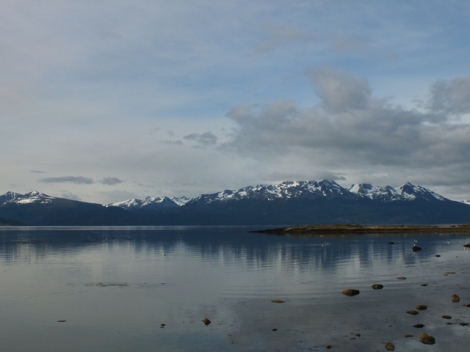

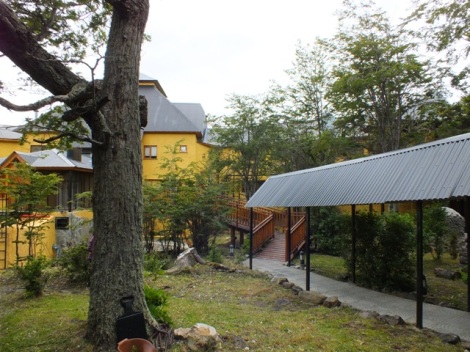
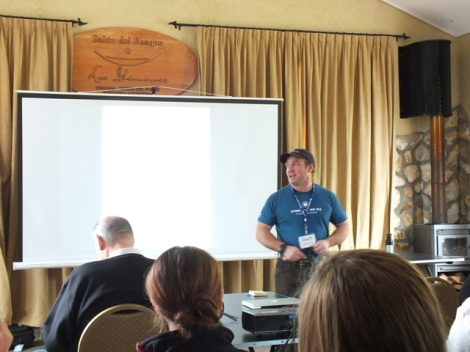

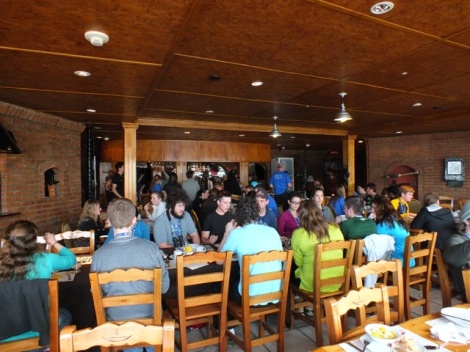
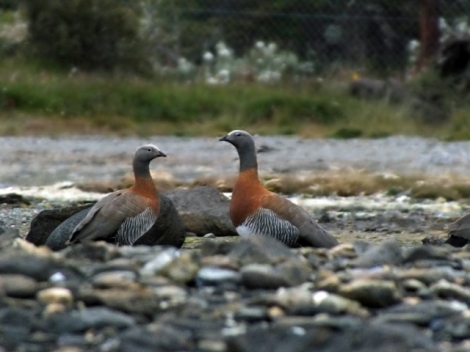
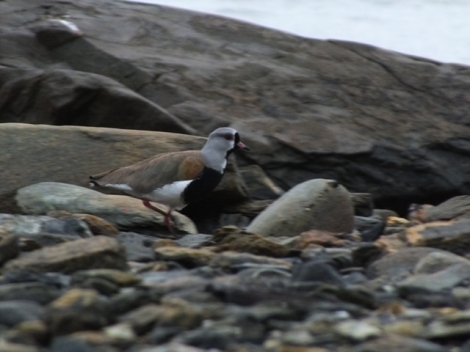
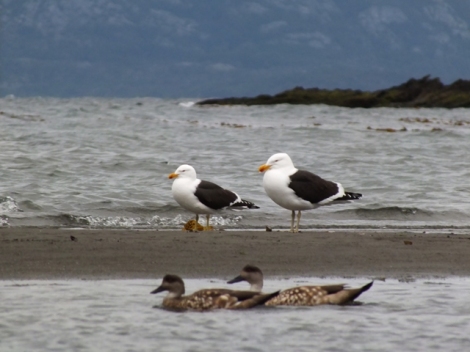

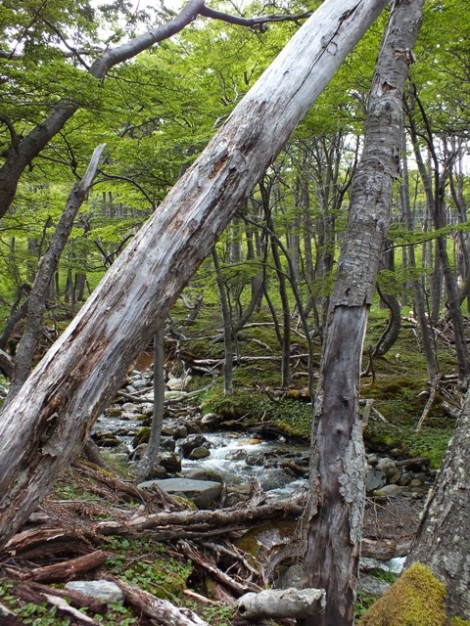
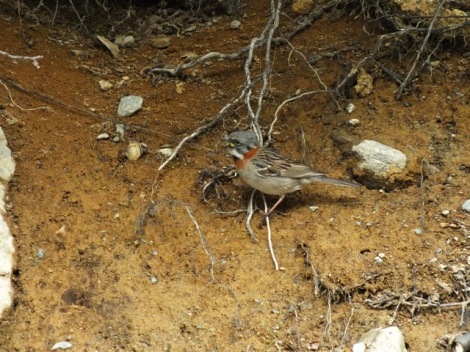

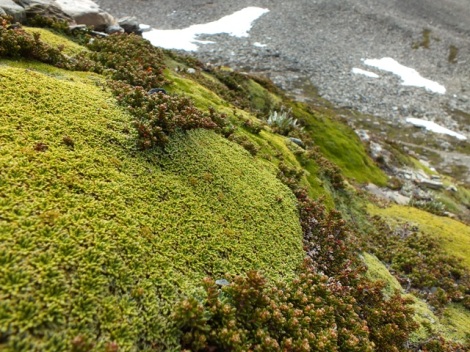

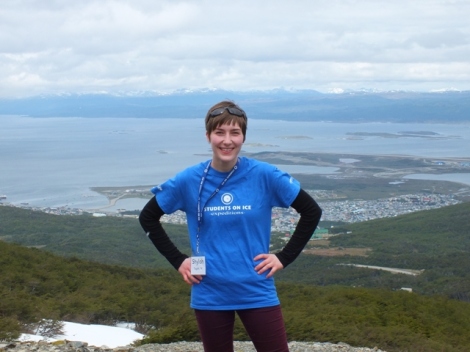
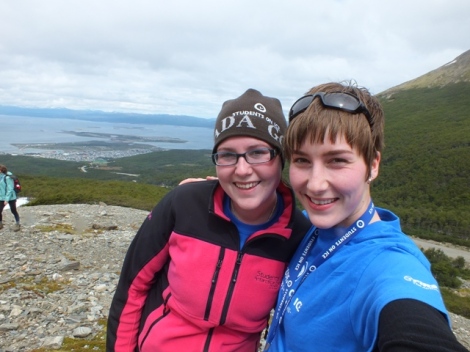
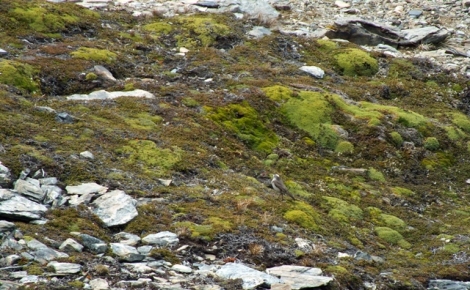
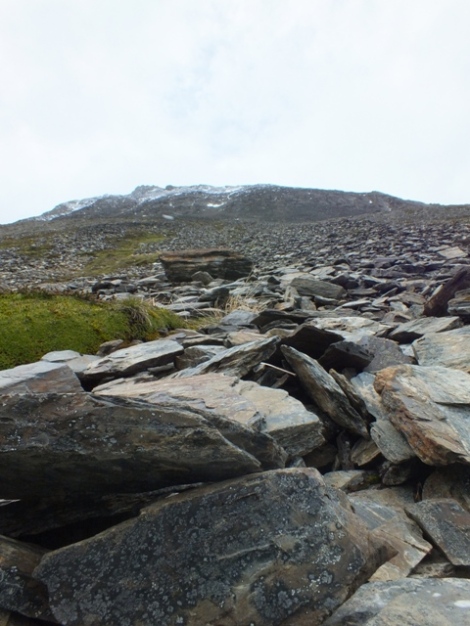
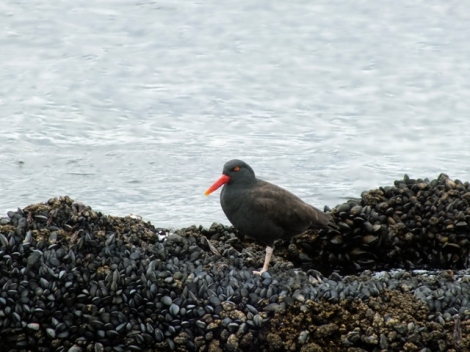

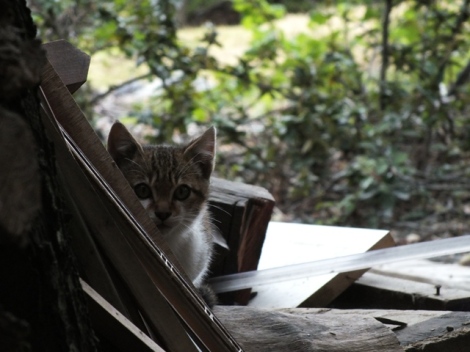
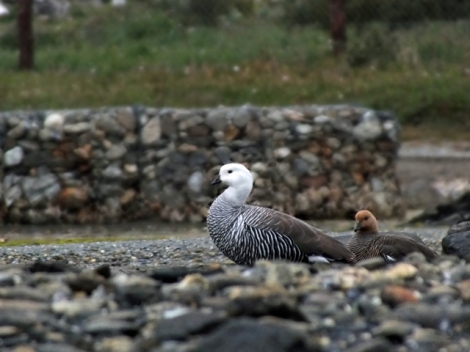

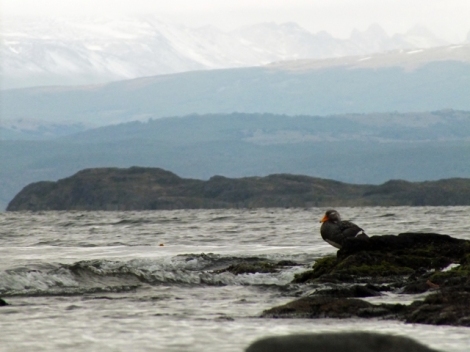




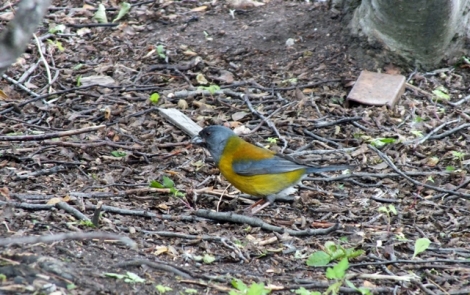
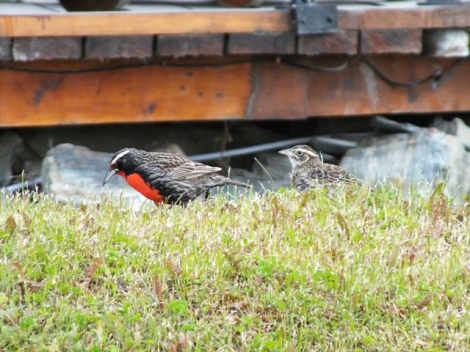
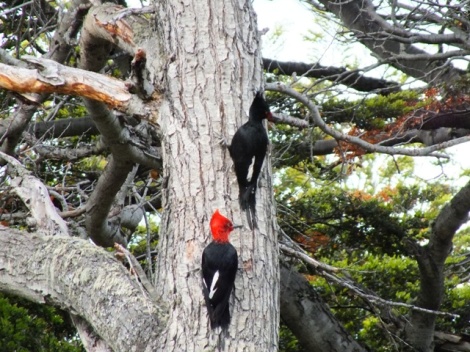

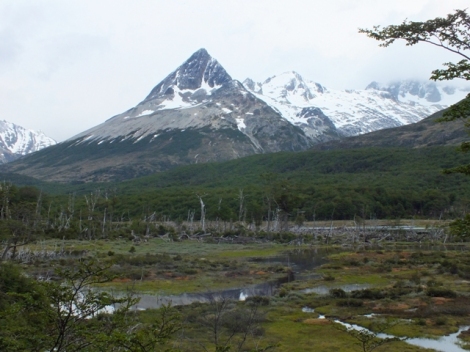
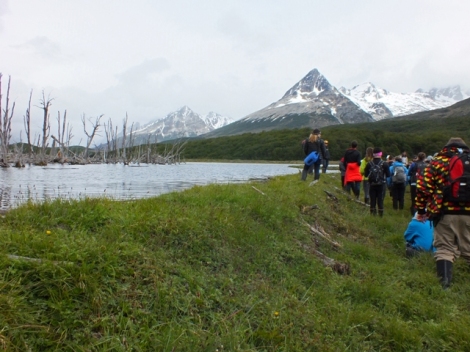
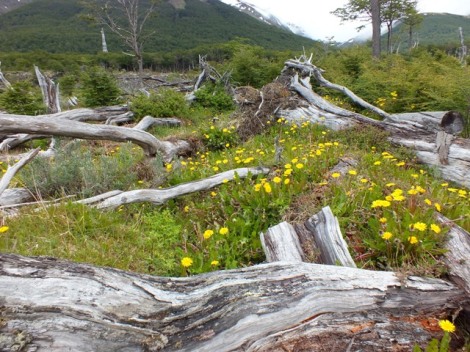
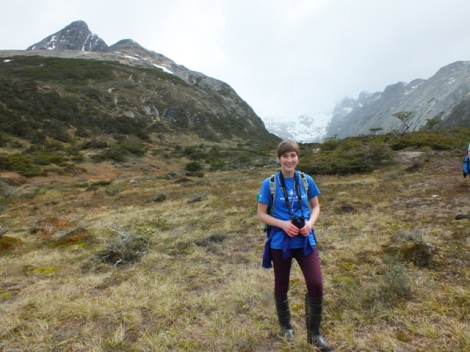




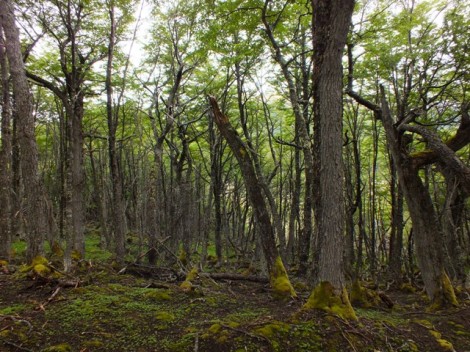
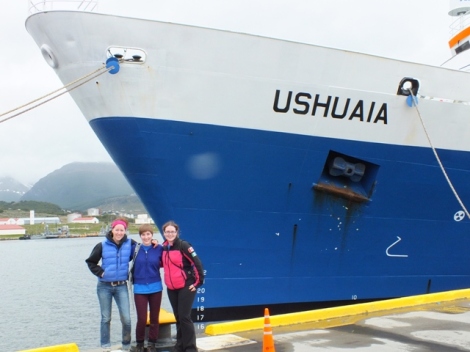
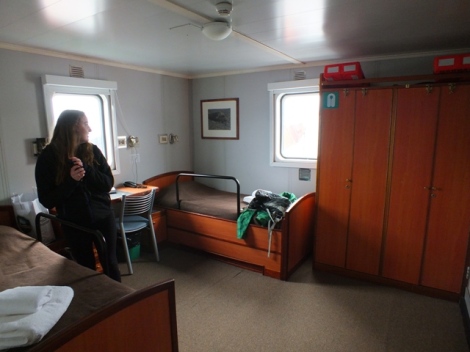

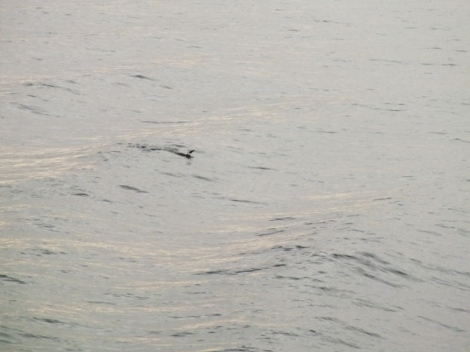
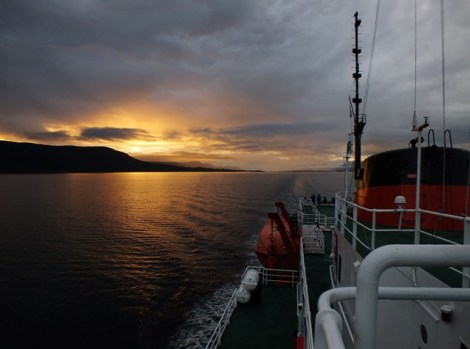
Pingback: Birding News #53 | Prairie Birder·
Pingback: This Week in Birding 53 by Charlotte Wasylik | Nemesis Bird·